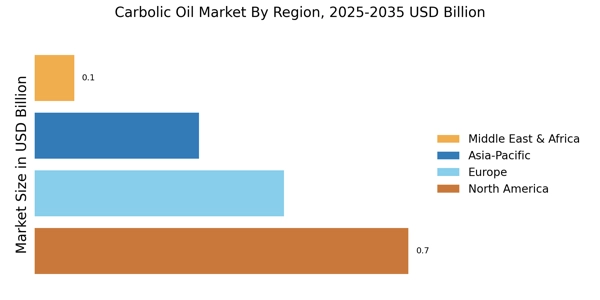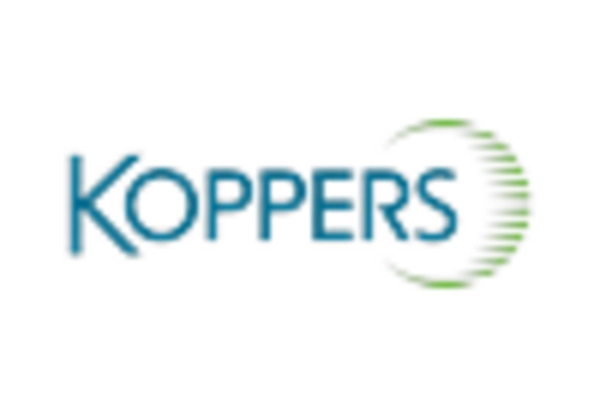Carbolic Oil Market Summary
As per Market Research Future analysis, the Carbolic Oil Market Size was estimated at 1.468 USD Billion in 2024. The Carbolic Oil industry is projected to grow from USD 1.533 Billion in 2025 to USD 2.361 Billion by 2035, exhibiting a compound annual growth rate (CAGR) of 4.41% during the forecast period 2025 - 2035
Key Market Trends & Highlights
The Carbolic Oil Market is experiencing a dynamic shift driven by sustainability and regulatory compliance.
- North America remains the largest market for carbolic oil, driven by its extensive use in medical applications.
- Asia-Pacific is emerging as the fastest-growing region, reflecting a surge in demand for disinfectants and industrial applications.
- The disinfectant segment holds the largest share, while the dye segment is witnessing rapid growth due to innovative applications.
- Key market drivers include the rising demand for antiseptics and the expanding applications in agriculture, supported by regulatory initiatives.
Market Size & Forecast
| 2024 Market Size | 1.468 (USD Billion) |
| 2035 Market Size | 2.361 (USD Billion) |
| CAGR (2025 - 2035) | 4.41% |
Major Players
Kraton Corporation (US), BASF SE (DE), Eastman Chemical Company (US), Huntsman Corporation (US), Koppers Holdings Inc. (US), Solvay SA (BE), Mitsui Chemicals Inc. (JP), SABIC (SA), Chevron Phillips Chemical Company (US)


















Leave a Comment